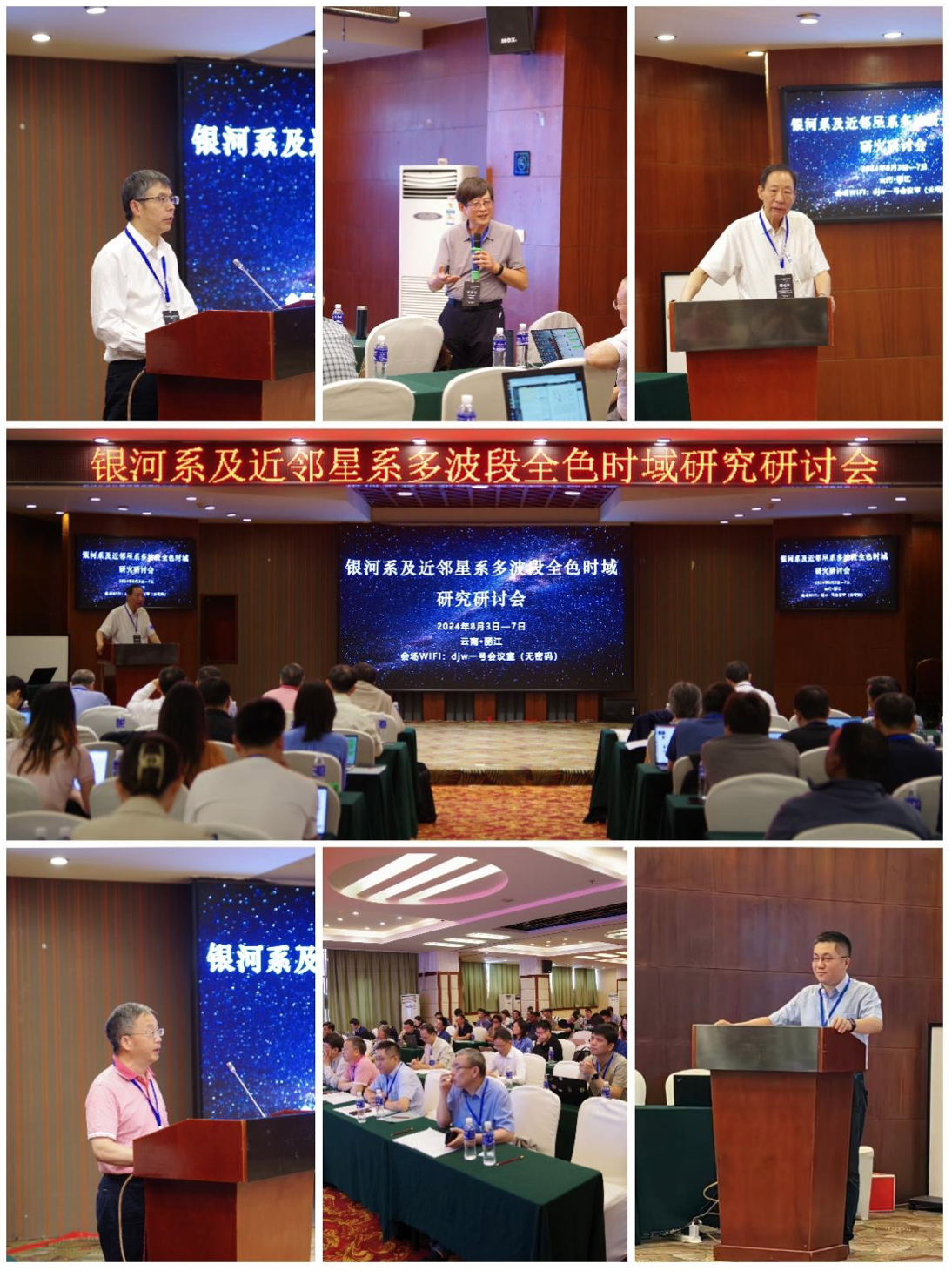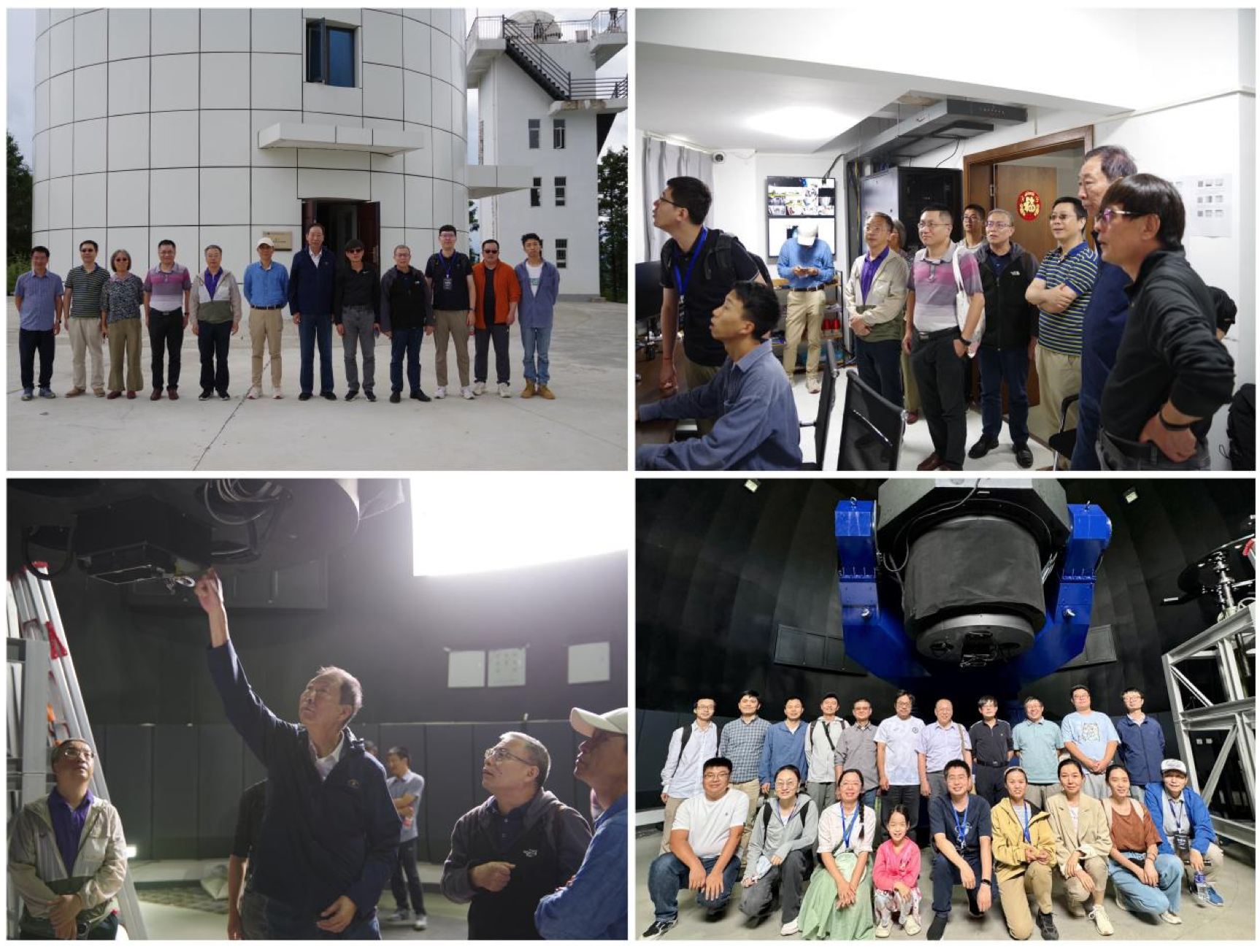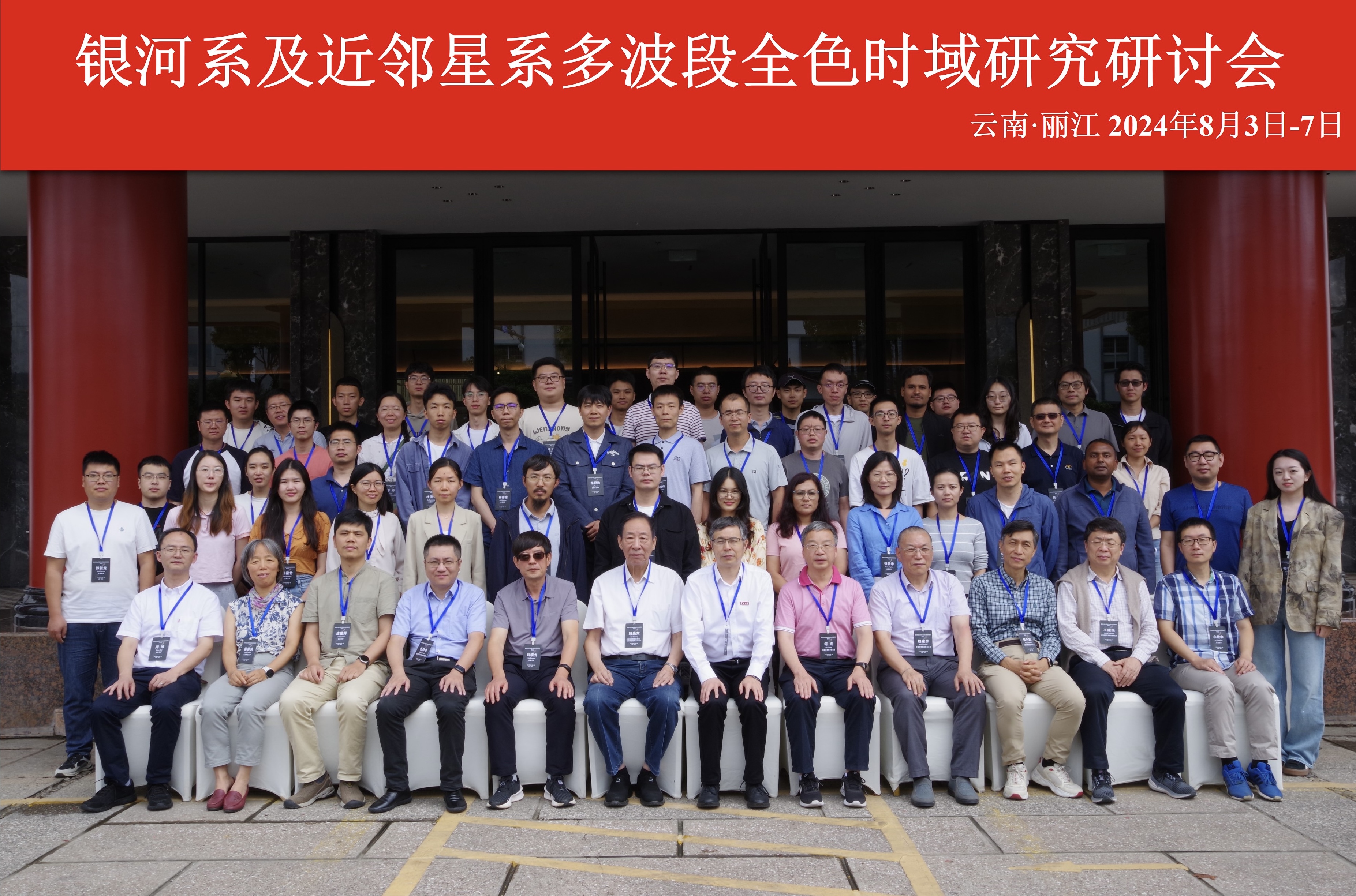银河系及近邻星系多波段全色时域研究研讨会成功召开
Successfully Held: The Multiband Photometric Time-Domain Research Seminar on the Milky Way and Nearby Galaxies
2024年8月3日至7日,由云南大学主办的银河系及近邻星系多波段全色时域研究研讨会在云南丽江召开。本次研讨会围绕梦飞巡天望远镜与EP、SVOM等高能天文卫星的科学研究与合作。云南大学校长马文会、中国巡天望远镜空间站总负责人、中国载人航天工程应用系统总设计师顾逸东院士、国家自然科学基金委员会数理学部天文处处长何成、中国科学院前沿科学与基础研究局天文力学处副处长毛羽丰致欢迎辞。

顾逸东院士对梦飞望远镜在几年时间内快速建成与运行表达了由衷的赞叹,期待梦飞与EP、SVOM以及更多的望远镜能建立紧密合作。顾院士认为中国天文学正处在一个非常重要的机遇期,空间上有包括EP、SVOM等多个重要天文设备,地面上有包括云南大学的梦飞望远镜以及正在研制的一系列地面天文望远镜,这些项目将推动我国天文学取得重大成果。顾院士指出三大望远镜间的协同合作构想极具前瞻性与创新性,预祝未来梦飞与EP、SVOM等望远镜的运行与合作为我国天文学特别是时域天文领域的发展注入强劲动力,并祝会议取得圆满成功。

本次会议针对银河系及近邻星系的结构和集成历史、宇宙中各类变源暂现源的多波段探测和后续监测、爆发机制、统计性质及与宿主星系性质的关联、哈勃常数危机等关键科学问题做了40余个报告并开展了热烈讨论,参会学者共同探讨银河系及近邻星系多波段全色时域研究的最新研究成果与发展趋势,促进了学术交流与合作。会议的成功召开将进一步推动梦飞巡天望远镜高精度真彩色巡天更好地开展,促进与EP、SVOM等高能天文卫星平台的协同合作,加强国内相关领域学者间的合作交流。

来自中国科学院国家天文台、中国科学院上海天文台、中国科学院云南天文台、中国科学院紫金山天文台、中国科学院空间科学与应用总体部、中国科学院高能物理研究所、中国科学院大学、北京师范大学、清华大学、广西大学、广州大学、南京师范大学、上海交通大学、澳洲国立大学、云南大学等国内外高校和研究机构的70余位专家学者与研究生参加了此次研讨会。

From August 3 to 7, 2024, the Multiband Photometric Time-Domain Research Seminar on the Milky Way and Nearby Galaxies, hosted by Yunnan University, was held in Lijiang, Yunnan. This seminar focused on scientific research and collaboration involving the Mephisto Telescope and high-energy astronomical satellites such as EP and SVOM. Welcome speeches were delivered by Ma Wenhui, President of Yunnan University; Gu Yidong, Chief Responsible Person for the Chinese Survey Telescope Space Station and Chief Designer of the Chinese Manned Space Engineering Application System; He Cheng, Director of the Astronomy Department of the Mathematical and Physical Sciences Division of the National Natural Science Foundation of China; and Mao Yufeng, Deputy Director of the Astronomy Dynamics Department of the Frontier Science and Basic Research Bureau of the Chinese Academy of Sciences.
Academician Gu Yidong expressed his sincere admiration for the rapid construction and operation of the Mephisto telescope within just a few years. He looks forward to the Mephisto telescope establishing close cooperation with EP, SVOM, and other telescopes. He believes that Chinese astronomy is at a very important opportunity period, with significant astronomical equipment including EP and SVOM in space, and the Mephisto telescope from Yunnan University, along with a series of ground-based telescopes currently under development. These projects will drive major achievements in China's astronomy. He pointed out that the collaborative concepts among the three major telescopes are highly forward-looking and innovative. He wishes that the future operations and collaborations of the Mephisto telescope with EP, SVOM, and others will inject strong momentum into the development of Chinese astronomy, especially in the field of time-domain astronomy, and he hopes the conference will be a great success.
The conference featured over 40 presentations and lively discussions addressing key scientific issues such as the structure and evolutionary history of the Milky Way and nearby galaxies, multi-wavelength detection and follow-up monitoring of various transient sources in the universe, eruption mechanisms, statistical properties and their connection to host galaxy characteristics, as well as the Hubble constant crisis. Attending scholars collaboratively explored the latest research findings and development trends in multi-wavelength, multi-color time-domain studies of the Milky Way and nearby galaxies, promoting academic exchange and collaboration. The successful holding of the conference will further advance the Mephisto Survey Telescope's high-precision true-color survey efforts, facilitate collaborative cooperation with high-energy astronomical satellite platforms like EP and SVOM, and strengthen cooperation and communication among scholars in related fields within the country.
Over 70 experts, scholars, and graduate students from various domestic and international universities and research institutions participated in the seminar, including the National Astronomical Observatory of the Chinese Academy of Sciences, Shanghai Astronomical Observatory, Yunnan Astronomical Observatory, Purple Mountain Observatory, the Department of Space Science and Application of the Chinese Academy of Sciences, the Institute of High Energy Physics, University of the Chinese Academy of Sciences, Beijing Normal University, Tsinghua University, Guangxi University, Guangzhou University, Nanjing Normal University, Shanghai Jiao Tong University, Australian National University, and Yunnan University.

